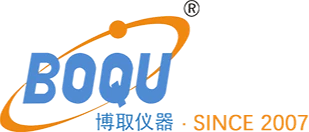Expert in Water Quality Measurement and Water Treatment Project Since 2007
The Limitations of Ultrasonic Water Level Sensors in Measuring Foam and Bubbles
Introduction
Ultrasonic water level sensors are widely used in various industries for measuring liquid levels. However, when it comes to measuring foam and bubbles, these sensors have certain limitations. This article explores the challenges faced by ultrasonic water level sensors in accurately measuring foam and bubbles. We will delve into the scientific principles behind ultrasonic technology, analyze the properties of foam and bubbles, discuss the limitations of ultrasonic sensors, and explore possible alternatives.
1. Understanding Ultrasonic Technology
Ultrasonic water level sensors work on the principle of sound waves. These sensors emit high-frequency sound waves that travel through the air and bounce back when they hit a liquid surface. By measuring the time taken for the sound waves to return, the sensor can calculate the distance between the sensor and the liquid surface, thus determining the liquid level.
2. The Nature of Foam and Bubbles
Foam and bubbles, unlike a still liquid surface, introduce complexities for ultrasonic sensors. Foam consists of small air pockets trapped within a liquid, while bubbles are entirely air-filled spheres. Both foam and bubbles have variable densities and surfaces, which cause the ultrasonic waves to behave differently compared to when in contact with a flat liquid surface. This leads to inaccuracies in the level measurements obtained by ultrasonic sensors.
3. Limitation #1: Signal Reflection and Absorption
When ultrasonic waves encounter foam or bubbles, they generate multiple reflections that can confuse the sensor. The uneven surfaces of foam and bubbles cause sound waves to scatter in different directions, resulting in multiple reflections that are difficult to interpret accurately. Additionally, foam and bubbles can absorb some of the sound energy, reducing the strength of the returning signals and further complicating accurate measurements.
4. Limitation #2: Incorrect Distance Calculation
Ultrasonic sensors calculate liquid level based on the time taken for sound waves to return. However, when foam or bubbles are present, the returning waves may come from different depths within the liquid, leading to inaccurate distance calculations. As foam and bubbles can have varying heights and densities in a liquid, the sensor may struggle to differentiate between the liquid surface and the top of the foam or bubbles, resulting in erroneous measurements.
5. Limitation #3: Ultrasonic Attenuation
Ultrasonic waves experience attenuation as they pass through foam or bubbles. Attenuation refers to the gradual reduction in amplitude and energy of the sound waves. The higher the foam or bubble concentration, the greater the attenuation. This attenuation can make it challenging for ultrasonic sensors to accurately detect the liquid level, as the returning signals may be weakened or distorted.
Alternative Solutions
While ultrasonic water level sensors face limitations in measuring foam and bubbles, alternative technologies can be considered for applications where foam or bubbles are present. Some alternatives include:
1. Capacitance Sensors: These sensors measure liquid levels based on changes in capacitance. They are not affected by foam or bubbles and provide reliable measurements in such scenarios.
2. Conductivity Sensors: For conductive liquids, conductivity sensors offer an effective solution. These sensors measure the electrical conductivity of liquids and provide accurate level measurements, irrespective of foam or bubbles.
3. Optical Sensors: Using optical principles, such as infrared or laser beams, these sensors can detect liquid levels without being affected by foam or bubbles. They are especially useful in applications where clear liquids are involved.
Conclusion
Ultrasonic water level sensors are widely employed for measuring liquid levels in various industries. However, their accuracy is compromised when it comes to measuring foam and bubbles due to limitations such as signal reflection and absorption, incorrect distance calculation, and ultrasonic attenuation. To overcome these challenges, alternative technologies like capacitance sensors, conductivity sensors, and optical sensors can be utilized. By selecting the right sensor based on the specific application requirements, accurate level monitoring can be achieved even in the presence of foam or bubbles.
Contact Us
Office Add:No. 118 Xiuyan Road,Pudong New Area,Shanghai,Zip Code:201315,China
Contact us right away
BOQU Instrument focus on development and production of water quality analyzers and sensors, including water quality meter, dissolved oxygen meter, pH sensors, etc.
